What is a Bulkhead in a House? Hiding & Providing
Author: Rick Worst | Editor: Omar Alonso
Review & Research: Jen Worst & Chris Miller

Do you want to partition the living spaces in your home? Well, what is a bulkhead in a house? A bulkhead allows you to separate aspects of the basement, garage, living room, or kitchen visibly from other areas. The bulkhead is usually a lowered part of the ceiling, and it's a boxed space usually used to house lighting or ductwork.
Bulkheads feature construction with various materials, from drywall to wood and even metals. You'll commonly find them in older homes to create more space in rooms, hide lighting features, or create storage areas that are out of sight. A bulkhead allows you to partition rooms to create a clean look without breaking down walls.
Some homes come with bulkheads already fitted into the room, but you can easily add one as a DIY project.
Where Do You Find Bulkheads in the Home?
Bulkheads appear in many different rooms, from the basement to the garage, living room, and kitchen; the bulkhead allows you to section off living spaces to create private areas. In the basement, a bulkhead will enable you to conceal ducting for the HVAC system or electrical wiring or a second entrance to the basement itself.
A bulkhead can conceal extractor fans and ducts in the kitchen, create overhead lighting on top of work surfaces, or add extra storage space. Use them in living and dining rooms to create lighting features, conceal air-conditioning systems, and add more storage space or partitioning.
Reasons to Install a House Bulkhead
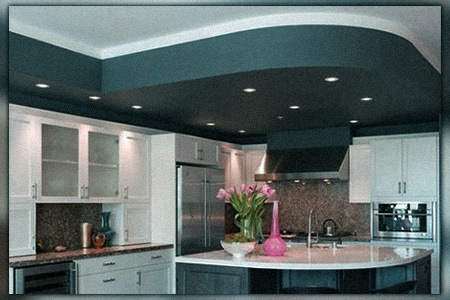
Besides the obvious benefits of tucking away electrical lines and air conditioning ductwork, why else would we want to have a house bulkhead?
Define a Space
Bulkheads help to define space and function in open-plan dining rooms and kitchens. For instance, a bulkhead could extend from two walls in the dining room, spanning the kitchen and ending alongside the kitchen island.
Paint to bulkhead a contrasting color to the ceiling and create a defined space that complements the décor and interior design of these areas. You can go with minimalism or maximalism in how you decorate it.
Add Dimension to the Room
Using a bulkhead in the kitchen, dining room, or lounge can enclose space above cupboards, kitchen benches, and lounge windows, creating a new dimension to the room. A bulkhead can create a recessed look while providing a practical function for hiding recessed types of lighting fixtures.
Increase Circulation
Bulkheads can conceal air-conditioning units, HVAC systems, and ducting, allowing the projection of airflow throughout a room and across living spaces for improved ventilation, especially in larger living spaces.
The air doesn't have to blow directly over sitting areas and kitchen benches. The centralized position of a bulkhead allows improved climate control throughout the room by dispersing the air towards to roof rather than directly into the space.
Create Shadow Lines
A bulkhead suspended from the ceiling creates a shadow line effect, complementing the color palette of objects in the room below it. So what is a bulkhead in a house? After it's constructed to perform it's primary duty, It can be anything after that. Your imagination is the limit.
What Are the Benefits of a Bulkhead?
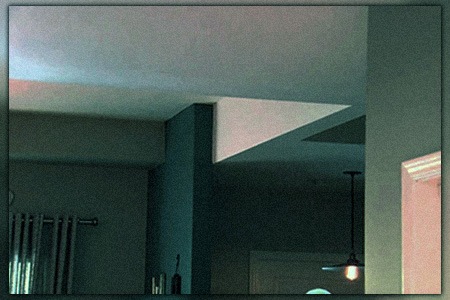
Typically, a bulkhead is a wall or partition built between rooms separate and define living spaces. For instance, you can install a bulkhead to separate a living room and media room or a bedroom and bathroom.
Bulkheads also add practical storage to living spaces, allowing you to pack away items or install built-in speakers or air systems. It's similar to under-stairs storage but in the walls or ceilings. The bulkhead can also hide entrances to basements, creating a cleaner look to a finished living space.
Bulkheads also provide more insulation to your home, sealing off rooms from each other. The result is cooler temperatures in the house during the summer and more warmth in the winter.
Bulkheads can be installed in the home's original design or added later to create practical functionality or a cosmetic effect. They're easy to fit and come in a wide range of materials o suit any application.
What Are the Materials Used in Bulkheads?
Drywall, wood, and metal bulkheads are popular options in homes. Each material has its benefits and drawbacks, so choosing the right materials for the installation is important for managing the budget of your project and the final visual effect.
A wood bulkhead is a popular material because it's sturdy, and you can use bare hardwoods for a cozy visual effect or paint over it to complement or contrast the color palette in the room.
A metal bulkhead is a good choice for its strength and durability. However, steel or copper bulkheads can be expensive to manufacture and require more effort and care during installation. Drywall bulkheads are a good choice for their high level of customization, ease of installation, and ability to blend in with the wall and ceiling.
Tips for Installing a Bulkhead
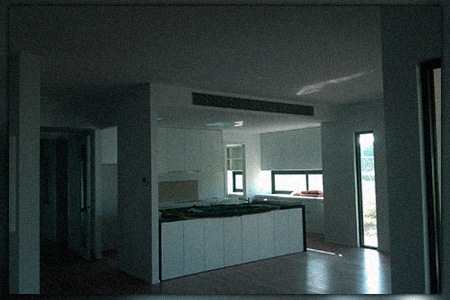
Installing a bulkhead can be a mammoth task, especially with meta designs like copper or simple if you're using drywall materials. Here's an outline of the basic steps in fitting a bulkhead to any room.
- Measure the entrance, walls, and ceiling where you want to install the bulkhead.
- Cut framing lumber to size and install it around the opening of the room.
- Fit the drywall and your trim around the entrance.
- Fit the door and trim.
- Seal the drywall or paint the boards.
- Install hardware and fixtures like cupboard doors, lighting, and door handles.
- Fit the ducting, HVAC unit, or air-conditioning.
The main thing is to make sure the wooden frame is sturdy enough to support any pressure placed against the drywall.
Maintenance Tips for the Bulkhead
Follow these maintenance tips to ensure your bulkhead stays in good condition.
Regularly inspect the bulkhead for signs of water damage and cracking, especially in the corners and around fittings.
Attend to repairs, such as cracking in drywall, as soon as possible. Leaving the problem will only make it worse.
If you have a bulkhead acting as an entrance to a room, ensure the seals around the doorway are in good order and seal the doorway and door properly.
DIY Bulkhead Ideas for Your Home
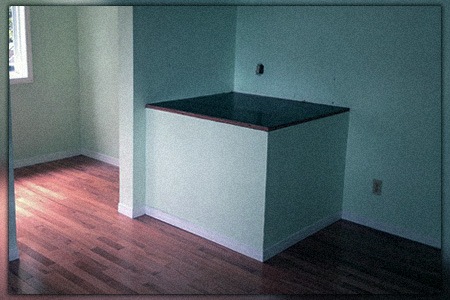
Bulkheads don't have to be eyesores. Finish a bulkhead with styling elements to complement the décor in your home. Here are a few tips for finishing the bulkhead in kitchens and living rooms.
If you have hardwood flooring, consider installing faux wood paneling to the bulkhead's exterior to complement the room's look for a rustic and traditional appeal.
Faux marbling or copper foil are great choices for finishing the bulkhead in kitchens, giving a contemporary look to the bulkhead's visual effect in the room.
Add decorative elements to the bulkhead for a purposeful and stylish look. Use the bulkhead to create a focal point in the lounge o kitchen by painting it a contrasting color to the walls or flooring.
What is a bulkhead in a house? It hides things, but it can provide storage space, too. Add more storage space to your kitchen or basement by fitting cabinets in the bulkhead or even just an open space as a kitchen cabinet alternative. You create a clean look for speakers, down lighting, and HVAC or air-conditioner installations by fitting them flush into the bulkhead.
What are the Drawbacks of Bulkheads?
While bulkheads add more visual appeal to the room and practical storage space, they also limit the ceiling height. Some homeowners might not like a bulkhead's look and find it intrusive in living areas.
Wall-mounted bulkheads might limit the feel of openness in living spaces, making them feel more confined. Celling bulkheads might make the room feel cramped. Bulkheads are also expensive to install, and most homeowners will need to hire a contractor for a clean, effective installation.
Can I Remove the Bulkhead?
If you move into a property with a bulkhead and don't like the look and feel it adds to the room, you can always remove it. Or you might notice water damage in the bulkhead as a sign that the ceiling is leaking and also has water damage, requiring its removal.
Unless you have handy skills, it's best to leave the removal or repair of a bulkhead to the professionals. Local contractors can give you an estimate on the job. Ensure you get two to three quotes to compare prices and look at client testimonials before appointing a contractor.
FAQs Regarding House Bulkheads
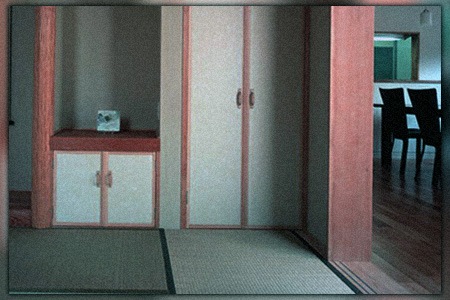
When the topic of bulkheads in a house arise, several questions commonly enter the conversation. Let’s look at those now.
How Long Will My New Bulkhead Last?
A bulkhead is a permanent installation that will last as long as your home if designed and fitted properly. Drywall bulkheads may crack over time and require filling and repainting every few years to keep them looking good. The service life of the bulkhead depends on the type of materials used and the quality of the installation.
What's the Difference Between a Bulkhead & a Soffit?
The soffit is the area between the top of the cabinets and the ceiling. For instance, it's the paneling used to create a clean, finished look to kitchen cabinets, giving the impression they reach the ceiling. As a result, dust and grease won't settle above the cabinets. The bulkhead is a structure filling an area in the room, either on walls or the ceiling.
When Do I Have to Replace the Bulkhead?
Depending on the materials used in the installation and the quality of fitment, you'll need to evaluate the bulkhead every two to five years to ensure it's structurally sound and has no internal damage or cracking.
Key Takeaways for House Bulkheads
- A bulkhead is an additional partition fitted to walls and ceilings in homes to create defined spaces.
- Bulkhead designs come in many shapes and are easy to customize to any room.
- Bulkheads feature construction in wood, drywall, or metal materials.
- They are ideal for concealing items like ducting, air-conditioners, HVAC units, down lighting fixtures, and even entrances to basements.
- They are also ideal for creating more storage in basements, kitchens, and living areas.
- Bulkheads require professional installation if you don’t have handy skills. You’ll need to inspect them every few years to ensure they’re structurally sound.
So, What is a Bulkhead in a House?
I personally knew what a house bulkhead was and what it was for long before I knew what it was called. In fact, the reason I probably never had an answer to “what is a bulkhead in a house” is because I never knew what to ask without simply pointing at it and saying “what is that called” and it never felt that important to me until I became a professional. And now we know!



